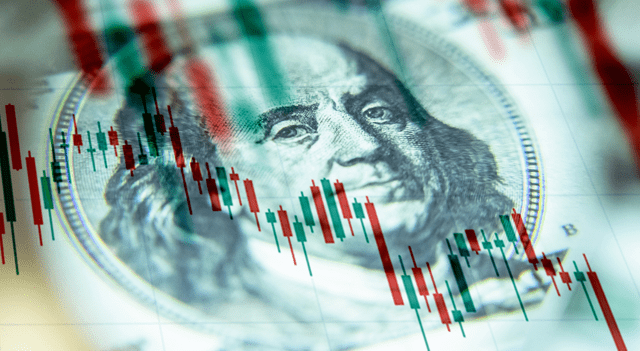The U.S. dollar eased on Monday, hovering close to its lowest levels seen in recent years, amid growing investor optimism over potential trade deals and expectations that the Federal Reserve may soon reduce interest rates.
By 04:10 ET, the Dollar Index, which tracks the greenback against six major currencies, slipped 0.2% to 96.81—its weakest point since March 2022. The index is set for a steep 2.6% decline throughout June.
Trade Progress Fuels Speculation on Fed Rate Cuts
Positive momentum in trade talks has boosted market confidence. The U.S. and China finalized an agreement last week, while Canada’s decision to scrap its digital services tax has reignited stalled negotiations. Additionally, European Commission President Ursula von der Leyen expressed optimism about reaching a U.S.-EU trade deal before the July 9 deadline, when new tariffs could take effect. Avoiding these tariffs, which risk increasing inflation, may encourage the Federal Reserve to lower borrowing costs.
Federal Reserve Chair Jerome Powell’s recent congressional testimony was perceived as dovish, hinting that rate cuts are likely if inflation remains contained despite potential tariff-driven price pressures this summer. The CME Group’s FedWatch Tool now shows a 91.5% chance of at least one quarter-point rate cut by September, up from 83% a week ago.
The Fed’s next meeting is scheduled for July, with no session planned in August. Meanwhile, investors remain attentive to a pending Senate bill proposing major tax cuts and increased spending, which could add $3.3 trillion to the national debt over a decade, according to the Congressional Budget Office.
Euro Gains on Dollar Weakness Amid Mixed European Data
The euro inched up 0.1% to 1.1730 against the dollar, nearing last Friday’s high of 1.1754—the strongest level since September 2021—largely driven by dollar softness. However, economic data from the eurozone painted a more cautious picture. German retail sales dropped sharply by 1.6% in May compared to April, dampening hopes for strong growth in Europe’s largest economy this quarter. Inflation reports due from Germany and Italy are expected to indicate a slight uptick in eurozone inflation.
ING analysts noted that while markets currently price in a first European Central Bank rate cut by December, there is increasing potential for a more dovish move sooner than anticipated.
The British pound slipped 0.1% to 1.3705 versus the dollar, just below last Thursday’s peak of 1.3770—the highest since October 2021. The UK economy expanded 0.7% in the first quarter of 2025, the fastest in a year, but the Bank of England forecasts slower growth of roughly 0.25% in the second quarter.
Asian Currencies React to Mixed Economic Signals
In Asia, the Japanese yen strengthened slightly, with USD/JPY falling 0.4% to 144.07 despite weaker-than-expected industrial output growth in May.
The Chinese yuan also edged higher, with USD/CNY down 0.1% to 7.1654, near its strongest point since November. Recent data showed China’s manufacturing sector contracted less than expected in June, while non-manufacturing activity improved, indicating some recovery helped by tariff reductions following the latest U.S.-China trade agreements. Nevertheless, manufacturing shrank for a third consecutive month, reflecting ongoing pressure from high U.S. tariffs and subdued domestic demand.
